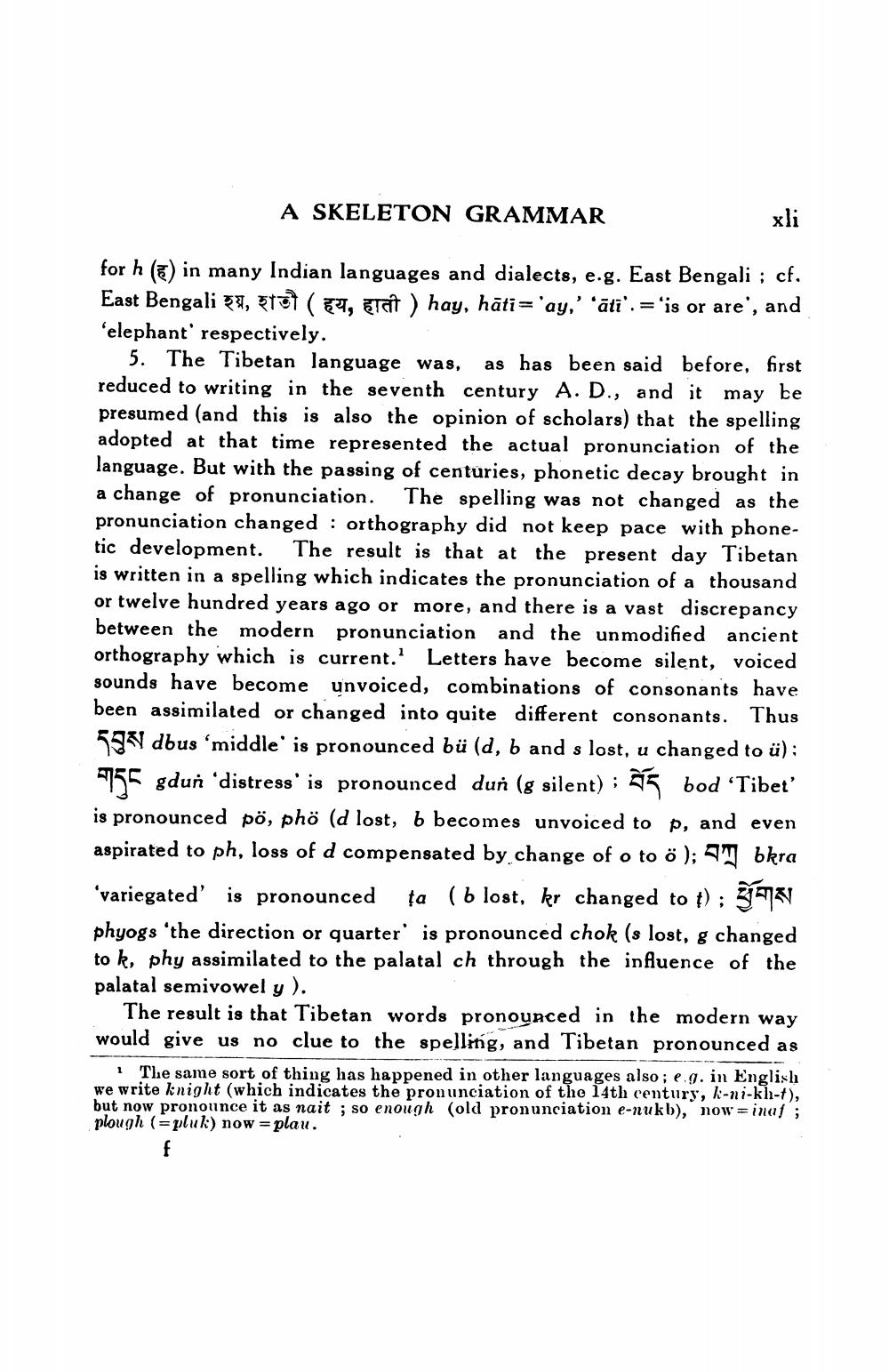________________
A SKELETON GRAMMAR
xli
for h (T) in many Indian languages and dialects, e.g. East Bengali ; cf. East Bengali 54, TOT ( 64, ETC ) hay, hāti= 'ay,' āti'. = 'is or are', and ‘elephant' respectively.
5. The Tibetan language was, as has been said before, first reduced to writing in the seventh century A.D., and it may be presumed (and this is also the opinion of scholars) that the spelling adopted at that time represented the actual pronunciation of the language. But with the passing of centuries, phonetic decay brought in a change of pronunciation. The spelling was not changed as the pronunciation changed : orthography did not keep pace with phonetic development. The result is that at the present day Tibetan is written in a spelling which indicates the pronunciation of a thousand or twelve hundred years ago or more, and there is a vast discrepancy between the modern pronunciation and the unmodified ancient orthography which is current. Letters have become silent, voiced sounds have become unvoiced, combinations of consonants have been assimilated or changed into quite different consonants. Thus 595 dbus 'middle' is pronounced bü (d, b and s lost, u changed to ü):
9755 gdun distress' is pronounced dur (g silent); 55 bod ‘Tibet' is pronounced pö, phö (d lost, 6 becomes unvoiced to p, and even aspirated to ph, loss of d compensated by change of o to ö); ? bkra 'variegated' is pronounced ta ( 6 lost, kr changed to t) ; Band phyogs 'the direction or quarter' is pronounced chok (s lost, g changed to k, phy assimilated to the palatal ch through the influence of the palatal semivowel y).
The result is that Tibetan words pronounced in the modern way would give us no clue to the spelling, and Tibetan pronounced as
1 The same sort of thing has happened in other languages also; e.g. in English we write knight (which indicates the pronunciation of the 14th century, k-ni-kh-t), but now pronounce it as nait ; so enough (old pronunciation e-nukb), now = inal ; plough (=pluk) now = plau.




